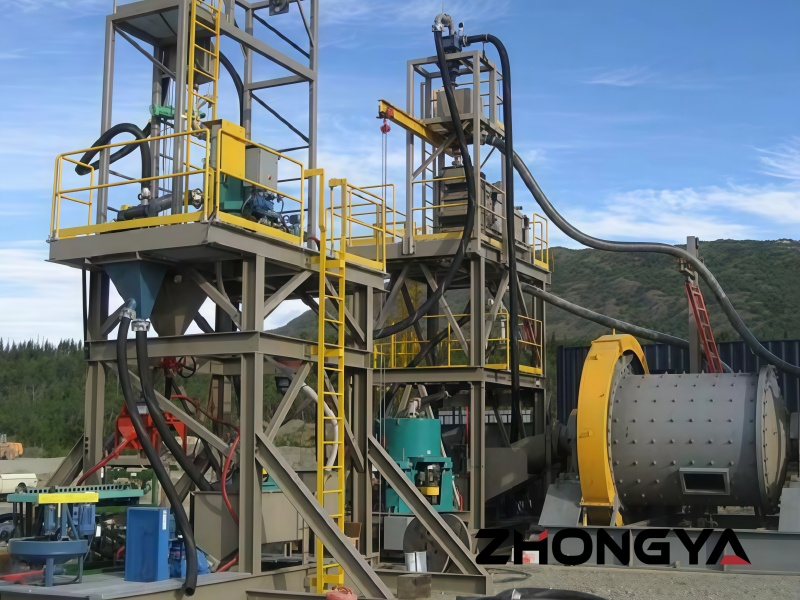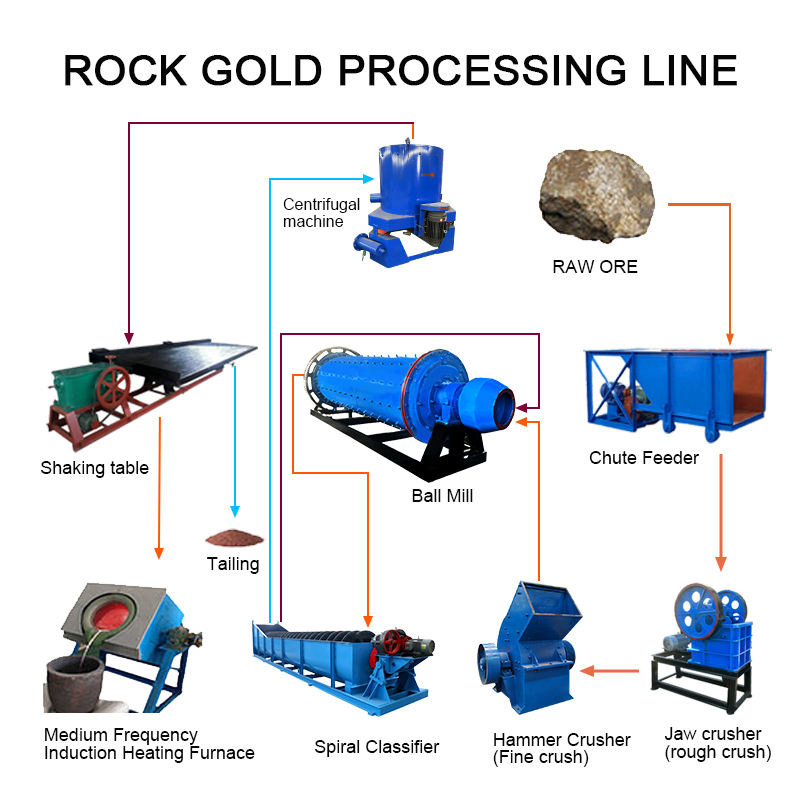Gravity separation is a traditional and efficient process that uses density differences between minerals to separate gold. This process is particularly suitable for the coarse-grained recovery of placer gold, vein gold, and associated gold.

Gravity separation is a process that utilises differences in mineral density to isolate gold. The gravity separation process create a comfortable loose layer and separation condition in virtue of integrating the media fluid and all kinds of mechanical force to obtain different density and diversity size particles process . As the density of gold mineral is much bigger than gangue mineral.Therefore, for gold ore containing gold particles, gravity separation processes should be employed to achieve efficient gold recovery.
Gold processing plant common including crushing, grinding, beneficiation process.
Step 1: Crushing
Due to the large particle size of the raw ore, it needs to be crushed into suitable particles. A loader feeds the raw ore into a vibrating feeder, which evenly conveys the material to a jaw crusher for primary crushing. In mineral processing plants, "more crushing, less grinding" is an important principle. If necessary, a cone crusher or hammer crusher can be added as a secondary crushing device to obtain the ideal particle size.
Equipment List: Hopper, Vibrating Feeder, Jaw Crusher, Cone Crusher or Hammer Crusher (Optional)
Step 2: Grinding
The crushed material is fed into a ball mill for fine grinding (e.g., 325 mesh). The ball mill and spiral classifier form a closed-loop circulation system. The ground material enters a classifier for classification. Qualified fine ore enters subsequent processes, while unqualified coarse ore is returned to the ball mill for regrinding. The particle size standard requirements for each mineral must be clearly defined in this grinding stage.
Equipment List: Electromagnetic Vibrating Feeder or similar equipment, Ball Mill, Spiral Classifier
Step 3: Mineral Processing
Not all mineral powders meet the standards during the production process. Specialized equipment (such as mixing tanks, flotation machines, shaking tables, spiral sluices, etc.) is required to separate the effective mineral powder. The qualified ore concentrate is ultimately stored in settling tanks.
Equipment List: Mixing tank, flotation machine, magnetic separator, centrifugal gold machine, shaking table, etc.

We are a professional machinery manufacturer that produces and sells our own products.
You can bring materials to the factory to test the machine
We will customize the solution according to your needs
60S Quick response
Minutes Technical reply
Hours design proposal
 whatsApp
whatsApp